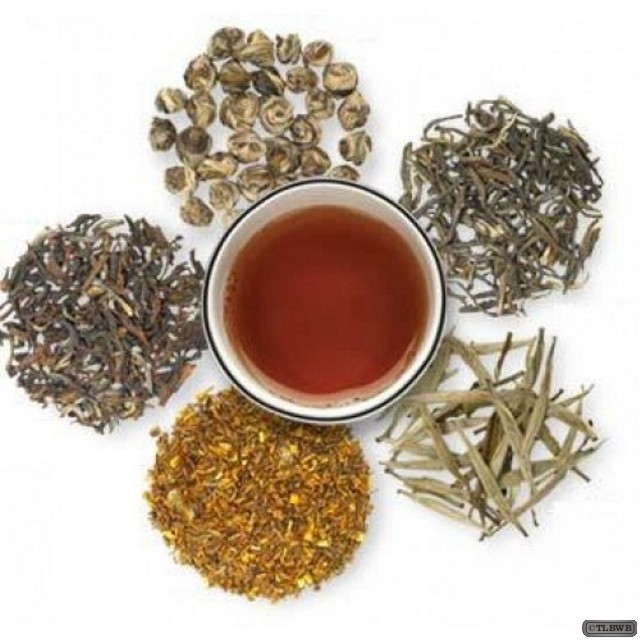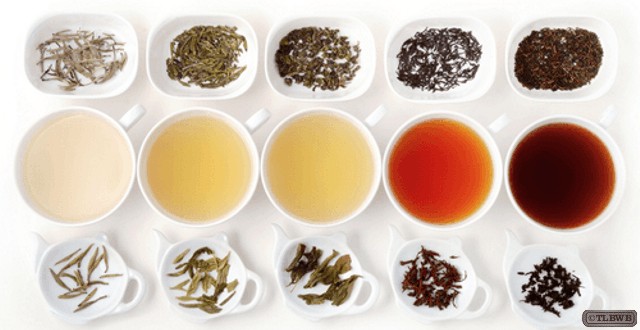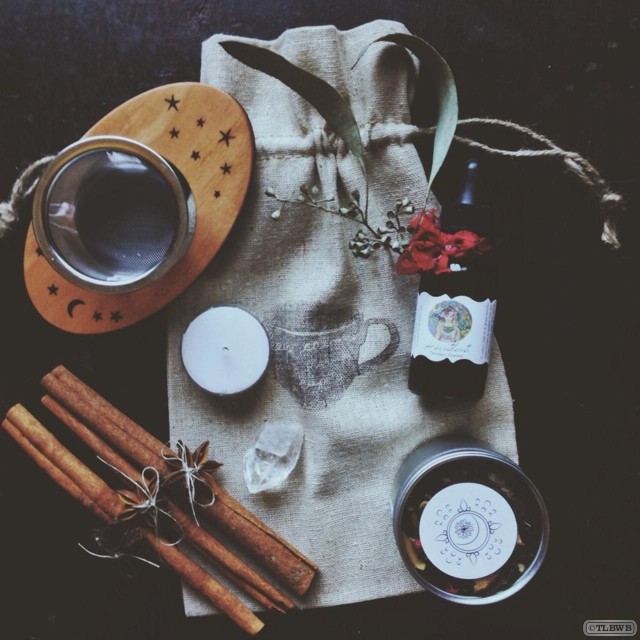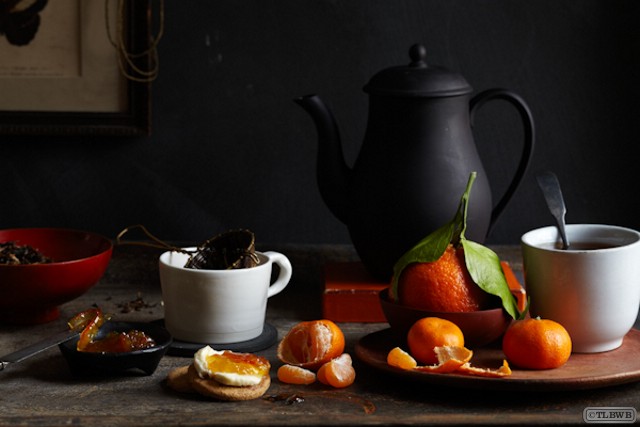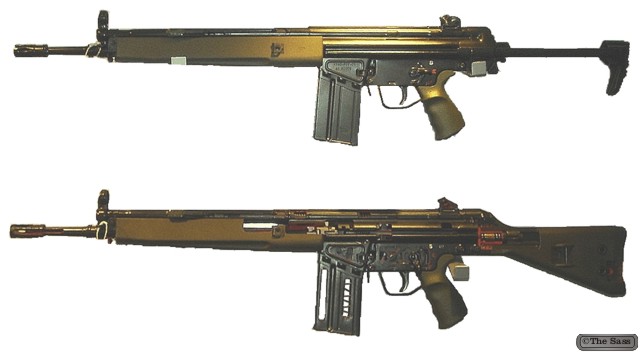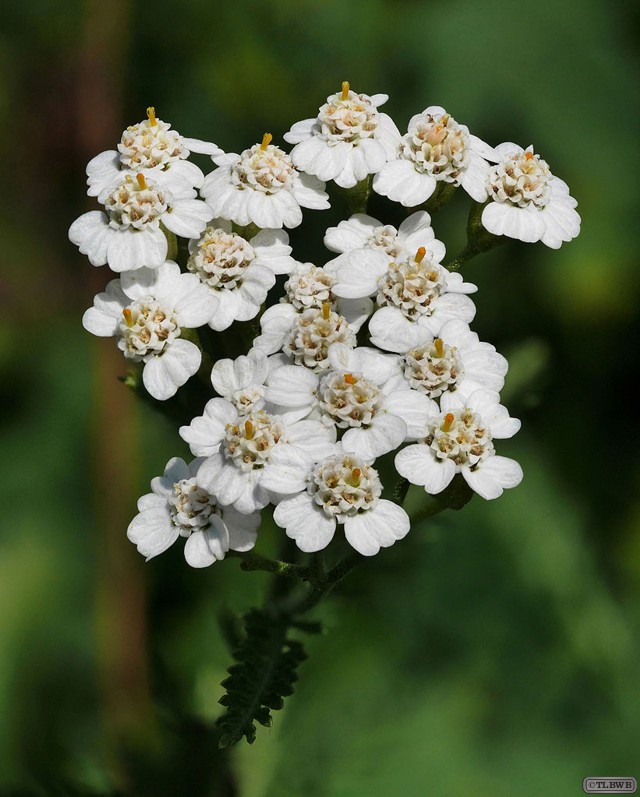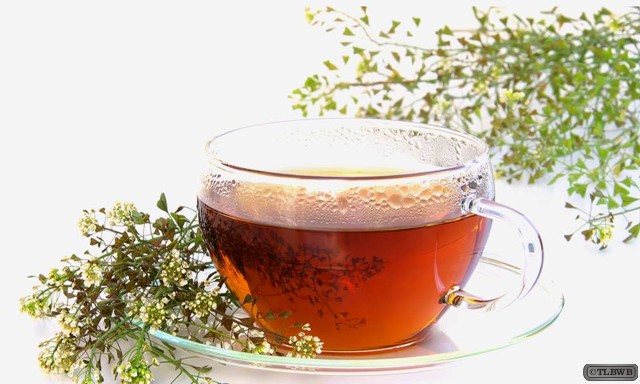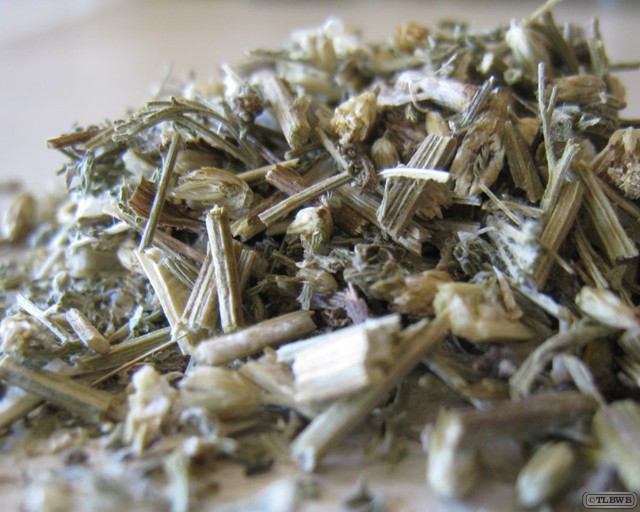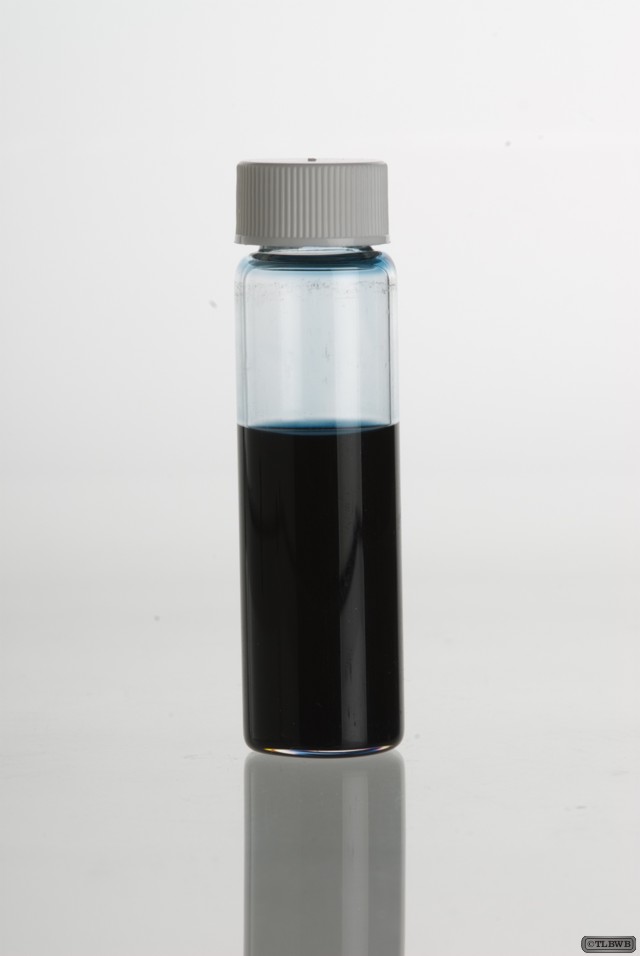Chinese Martial Arts
Modern History
People’s Republic
Chinese martial arts experienced rapid international dissemination with the end of the Chinese Civil War and the founding of the People’s Republic of China on October 1, 1949. Many well known martial artists chose to escape from the PRC’s rule and migrate to Taiwan, Hong Kong, and other parts of the world. Those masters started to teach within the overseas Chinese communities but eventually they expanded their teachings to include people from other ethnic groups.
Within China, the practice of traditional martial arts was discouraged during the turbulent years of the Chinese Cultural Revolution (1969-1976). Like many other aspects of traditional Chinese life, martial arts were subjected to a radical transformation by the People’s Republic of China to align them with Maoist revolutionary doctrine. The PRC promoted the committee-regulated sport of Wushu as a replacement for independent schools of martial arts. This new competition sport was disassociated from what was seen as the potentially subversive self-defense aspects and family lineages of Chinese martial arts.
In 1958, the government established the All-China Wushu Association as an umbrella organization to regulate martial arts training. The Chinese State Commission for Physical Culture and Sports took the lead in creating standardized forms for most of the major arts. During this period, a national Wushu system that included standard forms, teaching curriculum, and instructor grading was established. Wushu was introduced at both the high school and university level. The suppression of traditional teaching was relaxed during the Era of Reconstruction (1976-1989), as Communist ideology became more accommodating to alternative viewpoints. In 1979, the State Commission for Physical Culture and Sports created a special task force to reevaluate the teaching and practice of Wushu. In 1986, the Chinese National Research Institute of Wushu was established as the central authority for the research and administration of Wushu activities in the People’s Republic of China.
Changing government policies and attitudes towards sports in general led to the closing of the State Sports Commission (the central sports authority) in 1998. This closure is viewed as an attempt to partially de-politicize organized sports and move Chinese sport policies towards a more market-driven approach. As a result of these changing sociological factors within China, both traditional styles and modern Wushu approaches are being promoted by the Chinese government.
Chinese martial arts are an integral element of 20th-century Chinese popular culture. Wuxia or “martial arts fiction” is a popular genre that emerged in the early 20th century and peaked in popularity during the 1960s to 1980s. Wuxia films were produced from the 1920s. The Kuomintang suppressed wuxia, accusing it of promoting superstition and violent anarchy. Because of this, wuxia came to flourish in British Hong Kong, and the genre of kung fu movie in Hong Kong action cinema became wildly popular, coming to international attention from the 1970s. The genre declined somewhat during the 1980s, and in the late 1980s the Hong Kong film industry underwent a drastic decline, even before Hong Kong was handed to the People’s Republic in 1997. In the wake of Crouching Tiger, Hidden Dragon (2000), there has been somewhat of a revival of Chinese-produced wuxia films aimed at an international audience, including Hero (2002), House of Flying Daggers (2004) and Reign of Assassins (2010).
Luc Paquin
Blend the teas for a recipe in a glass jar, then measure out one tablespoon per cup of tea. A small two cup teapot will take two tablespoons of tea. If you are like me, however, two cups of tea equates to three because I prefer my tea with lots of milk. because the tea base is black tea leaves, the addition of milk and a sweetener makes for a very flavorful beverage. Unless you are making tea for a crowd, you really do not need more than one or two tablespoons of tea at any one time. Store in a closed jar in a cabinet away from light.
- Tea For Divination
- Tea For Psychic Healing
- Tea For Love (Spell)
- Tea For Meditation
- Tea For Purification
- Tea For Relaxation
- Tea For Health (Spells)
- Tea For Protection
Besides magical teas, there are combinations that are simply a pleasant way to reconnect with the earth devas, the Goddess and the God. For this type of quiet closeness to nature, you might want to try these taste combinations of herbal teas:
- English breakfast, rose hips, and hyssop
- Linden flower and chamomile
- China black, chamomile, and rose hips
- English breakfast, dandelion root, rose hips, and chamomile
- English breakfast, elder flower, hops, and rose hips
The Lost Bearded White Brother
Chinese Martial Arts
Modern History
Republican Period
Most fighting styles that are being practiced as traditional Chinese martial arts today reached their popularity within the 20th century. Some of these include Baguazhang, Drunken Boxing, Eagle Claw, Five Animals, Xingyi, Hung Gar, Monkey, Bak Mei Pai, Praying Mantis, Fujian White Crane, Jow Ga, Wing Chun and Taijiquan. The increase in the popularity of those styles is a result of the dramatic changes occurring within the Chinese society.
In 1900-01, the Righteous and Harmonious Fists rose against foreign occupiers and Christian missionaries in China. This uprising is known in the West as the Boxer Rebellion due to the martial arts and calisthenics practiced by the rebels. Empress Dowager Cixi gained control of the rebellion and tried to use it against the foreign powers. The failure of the rebellion led ten years later to the fall of the Qing Dynasty and the creation of the Chinese Republic.
The present view of Chinese martial arts are strongly influenced by the events of the Republican Period (1912-1949). In the transition period between the fall of the Qing Dynasty as well as the turmoil of the Japanese invasion and the Chinese Civil War, Chinese martial arts became more accessible to the general public as many martial artists were encouraged to openly teach their art. At that time, some considered martial arts as a means to promote national pride and build a strong nation. As a result, many training manuals were published, a training academy was created, two national examinations were organized as well as demonstration teams travelled overseas, and numerous martial arts associations were formed throughout China and in various overseas Chinese communities. The Central Guoshu Academy (Zhongyang Guoshuguan) established by the National Government in 1928 and the Jing Wu Athletic Association founded by Huo Yuanjia in 1910 are examples of organizations that promoted a systematic approach for training in Chinese martial arts. A series of provincial and national competitions were organized by the Republican government starting in 1932 to promote Chinese martial arts. In 1936, at the 11th Olympic Games in Berlin, a group of Chinese martial artists demonstrated their art to an international audience for the first time.
The term Kuoshu (or Guoshu, meaning “national art”), rather than the colloquial term gongfu was introduced by the Kuomintang in an effort to more closely associate Chinese martial arts with national pride rather than individual accomplishment.
Luc Paquin
Heckler & Koch G3
The G3 is a 7.62×51mm NATO battle rifle developed in the 1950s by the German armament manufacturer Heckler & Koch GmbH (H&K) in collaboration with the Spanish state-owned design and development agency CETME (Centro de Estudios Técnicos de Materiales Especiales).
History
The origin of this rifle can be traced back to the final years of World War II when Mauser engineers at the Light Weapon Development Group (Abteilung 37) at Oberndorf am Neckar designed the MKb Gerät 06 (Maschinenkarabiner Gerät 06 or “machine carbine device 06”) prototype assault rifle chambered for the intermediate 7.92×33mm Kurz cartridge, first with the Gerät 06 model using a roller-locked short recoil mechanism originally adapted from the MG 42 machine gun but with a fixed barrel and conventional gas-actuated piston rod. It was realized that with careful attention to the mechanical ratios, the gas system could be omitted. The resultant weapon, the Gerät 06H (the “H” suffix is an abbreviation for halbverriegelt or “half-locked”) was assigned the designation StG 45(M) (Sturmgewehr 45(M) or assault rifle) but was not produced in any significant numbers and the war ended before the first production rifles were completed.
The German technicians involved in developing the StG 45(M) were taken to work in France at CEAM (Centre d’Etudes et d’Armement de Mulhouse). The StG 45(M) mechanism was modified by Ludwig Vorgrimler and Theodor Löffler at the Mulhouse facility between 1946 and 1949. Three versions were made, chambered in .30 Carbine, 7.92×33 mm Kurz as well as the experimental 7.65×35 mm French short cartridge developed by Cartoucherie de Valence in 1948. A 7.5×38 mm cartridge using a partial aluminium bullet was abandoned in 1947. Löffler’s design, designated the Carabine Mitrailleuse Modèle 1950, was retained for trials among 12 different prototypes designed by CEAM, MAC, and MAS. Engaged in the Indochina War and being the second NATO contributor, France canceled the adoption of these new weapons for financial reasons.
In 1950, Vorgrimler moved to Spain where he created the LV-50 rifle chambered for the Kurz cartridge and later, the proprietary 7.92×40 mm CETME M53 round. At this point, the rifle was renamed the Modelo 2. The Modelo 2 drew the attention of the West German Border Guards (Bundesgrenzschutz), who sought to re-equip the newly formed national defense forces. Not willing to accept a cartridge outside of the NATO specification, the Germans asked CETME to develop a 7.62×51 mm version of the rifle. The resulting CETME Model A was chambered for the 7.62×51 mm CETME cartridge which was identical in chamber dimensions but had a reduced-power load compared to the 7.62 mm NATO round. Further development of the rifle with input from H&K produced the CETME Model B which received several modifications, including the ability to fire from a closed bolt in both semi-automatic and automatic firing modes, a new perforated sheet metal handguard (the folding bipod had been the foregrip in previous models), improved ergonomics and a slightly longer barrel with a 22 mm rifle grenade launcher guide. In 1958, this rifle was accepted into service with the Spanish Army as the Modelo 58, using the 7.62×51 mm CETME round.
In 1956, the Bundesgrenzschutz canceled their planned procurement of the CETME rifles, adopting the Belgian-made FN FAL (G1) instead. However, the newly formed West German Army (Bundeswehr) now showed interest and soon purchased a number of CETME rifles (7.62×51 mm NATO chambering) for further testing. The CETME, known as the Automatisches Gewehr G3 according to German nomenclature, competed successfully against the Swiss SIG SG 510 (G2) and the American AR-10 (G4) to replace the previously favored G1 rifle. In January 1959, the Bundeswehr officially adopted the CETME proposal. The West German government wanted the G3 rifle to be produced under license in Germany; purchase of the G1 had previously fallen through over FN’s refusal to grant such a license. In the case of the G3, the Dutch firm Nederlandse Wapen en Munitiefabriek (NWM) held production and sales rights to the CETME design outside of Spain. To acquire production rights, the West German government offered NWM contracts to supply the German Air Force (Luftwaffe) with 20mm ammunition. Production of the G3 was then assigned to Rheinmetall and H&K. The latter company already had ties to CETME, and had worked to further optimize the CETME rifle for use with the full-power 7.62×51 mm NATO cartridge (as opposed to the downgraded CETME variant). In 1969, Rheinmetall gave up production rights to the G3 in exchange for H&K’s promise not to bid on MG 3 production. Later in 1977, the West German government ceded ownership of G3 production and sales rights exclusively to H&K.
Initial production G3 rifles differed substantially from more recent models; early rifles featured closed-type mechanical flip-up sights (with two apertures), a lightweight folding bipod, a stamped sheet steel handguard, a wooden buttstock (in fixed stock models) or a telescopic metal stock. The weapon was modernized during its service life (among other minor modifications it received new sights, a different flash suppressor, and a synthetic handguard and shoulder stock), resulting in the most recent production models, the G3A3 (with a fixed polymer stock) and the G3A4 (telescoping metal stock). The rifle proved successful in the export market, being adopted by the armed forces of over 40 countries. The G3 was and in some cases continues to be produced under license in: France (MAS), Greece (Hellenic Arms Industry), Iran (Defense Industries Organization), Luxembourg (Luxemburg Defense Technologie), Mexico, Myanmar, Norway (Kongsberg Våpenfabrikk), Pakistan (Pakistan Ordnance Factories), Portugal (FBP), Saudi Arabia, Sweden (FFV), Thailand, Turkey (MKEK) and the United Kingdom (Royal Ordnance).
Design Details
The G3A3 (A4) is a selective-fire automatic weapon that employs a roller-delayed blowback operating system. The two-piece bolt assembly consists of a breech (bolt head) and bolt carrier. The bolt is held in battery by two sliding cylindrical rollers that engage locking recesses in the barrel extension (popularly called a “trunnion”; BATF calls this a “mounting block”). The breech is opened when both rollers are compressed inward against camming surfaces driven by the rearward pressure of the expanding gases upon the bolt head. As the rollers move inward, recoil energy is transferred to the locking piece and bolt carrier which begin to withdraw while the bolt head slowly moves rearward in relation to the bolt carrier. As the bolt carrier clears the rollers, pressure in the bore drops to a safe level, the bolt head is caught by the bolt carrier and moves to the rear as one unit, continuing the operating cycle. The bolt also features an anti-bounce mechanism that prevents the bolt from bouncing off the barrel’s breech surface. The spring-powered claw extractor is also contained inside the bolt while the lever ejector is located inside the trigger housing (actuated by the recoiling bolt).
The rifle is hammer fired and has a trigger mechanism with a 3-position fire selector switch that is also the manual safety toggle that secures the weapon from accidentally discharging (fire selector in the “E” or “1” position – single fire mode (“Einzelfeuer”), “F” or “20” – automatic fire (“Feuerstoß”), “S” or “0” – weapon is safe (“Sicher”), trigger disabled mechanically). The weapon can be fitted with an optional 4-position safety/fire selector group illustrated with pictograms with an ambidextrous selector lever. The additional, fourth selector setting enables a 3-round burst mode of fire.
The firearm is equipped with iron sights that consist of a rotary rear drum and hooded front post. The rear sight, mechanically adjustable for both windage and elevation, has an open notch used to fire up to 100 m and three apertures used for: 200, 300 and 400 m. The receiver housing has recesses that work with HK clamp adapters used to mount day or night optics.
The rifled barrel (contains 4 right-hand grooves with a 305 mm twist rate) terminates with a slotted flash suppressor which can also be used to attach a bayonet or serve as an adapter for launching rifle grenades. From the G3A3 the barrel had polygonal rifling. The barrel chamber is fluted, which assists in the initial extraction of a spent cartridge casing (since the breech is opened under very high barrel pressure).
The G3A3 (A4) uses either steel (260 g) or aluminium (140 g) 20-round double-stacked straight box magazines, or a 50-round drum magazine. H&K developed a prototype plastic disposable magazine in the early 1960s, but it was not adopted as aluminum magazines were just as light and proved more durable, as well as easier to produce.
Standard accessories supplied with the rifle include: a detachable bipod (not included with rifles that have a perforated plastic handguard), sling, cleaning kit and a speed-loading device. Several types of bayonet are available for the G3, but with few exceptions they require an adapter to be inserted into the end of the cocking tube. The most common type features a 63/4 inch spear-point blade nearly identical with the M7 bayonet, but with a different grip because of its mounting above the barrel. The weapon can also mount a 40 mm HK79 under-barrel grenade launcher, blank firing adapter a straight blowback bolt (called a “PT” bolt, lacks rollers) used for firing 7.62×51 mm ammunition with plastic bullets, a conversion kit used for training with .22 Long Rifle ammunition and a sound suppressor (that uses standard ammunition).
The G3 is a modular weapon system. Its butt-stock, fore-stock and pistol-grip/fire-control assembly may be changed at will in a variety of configurations. Simple push-pins hold the components in place and removing them will allow the user to remove and replace parts rapidly.
The Sass
Chinese Martial Arts
Shaolin and Temple-Based Martial Arts
The Shaolin style of kung fu is regarded as one of the first institutionalized Chinese martial arts. The oldest evidence of Shaolin participation in combat is a stele from 728 CE that attests to two occasions: a defense of the Shaolin Monastery from bandits around 610 CE, and their subsequent role in the defeat of Wang Shichong at the Battle of Hulao in 621 CE. From the 8th to the 15th centuries, there are no extant documents that provide evidence of Shaolin participation in combat.
Between the 16th and 17th centuries, at least forty sources exist to provide evidence both that monks of Shaolin practiced martial arts, and that martial practice became an integral element of Shaolin monastic life. The earliest appearance of the frequently cited legend concerning Bodhidharma’s supposed foundation of Shaolin Kung Fu dates to this period. The origin of this legend has been traced to the Ming period’s Yijin Jing or “Muscle Change Classic”, a text written in 1624 attributed to Bodhidharma.
References of martial arts practice in Shaolin appear in various literary genres of the late Ming: the epitaphs of Shaolin warrior monks, martial-arts manuals, military encyclopedias, historical writings, travelogues, fiction and poetry. However these sources do not point out to any specific style originated in Shaolin. These sources, in contrast to those from the Tang period, refer to Shaolin methods of armed combat. These include a skill for which Shaolin monks became famous: the staff (gùn, Cantonese gwan). The Ming General Qi Jiguang included description of Shaolin Quan Fa (Wade-Giles: Shao Lin Ch’üan Fa; literally: “Shaolin fist technique”; Japanese: Shorin Kempo) and staff techniques in his book, Ji Xiao Xin Shu, which can translate as New Book Recording Effective Techniques. When this book spread to East Asia, it had a great influence on the development of martial arts in regions such as Okinawa and Korea.
Luc Paquin
Sacks on TED
Oliver Sacks
Norma
Chinese Martial Arts
Early History
The earliest references to Chinese martial arts are found in the Spring and Autumn Annals (5th century BCE), where a hand-to-hand combat theory, one that integrates notions of “hard” and “soft” techniques, is mentioned. A combat wrestling system called juélì or jiaolì is mentioned in the Classic of Rites. This combat system included techniques such as strikes, throws, joint manipulation, and pressure point attacks. Jiao Di became a sport during the Qin Dynasty (221-207 BCE). The Han History Bibliographies record that, by the Former Han (206 BCE – 8 CE), there was a distinction between no-holds-barred weaponless fighting, which it calls shoubó , for which training manuals had already been written, and sportive wrestling, then known as juélì. Wrestling is also documented in the Shi Jì, Records of the Grand Historian, written by Sima Qian (ca. 100 BCE).
In the Tang Dynasty, descriptions of sword dances were immortalized in poems by Li Bai. In the Song and Yuan dynasties, xiangpu contests were sponsored by the imperial courts. The modern concepts of wushu were fully developed by the Ming and Qing dynasties.
Philosophical Influences
The ideas associated with Chinese martial arts changed with the evolution of Chinese society and over time acquired some philosophical bases: Passages in the Zhuangzi, a Daoist text, pertain to the psychology and practice of martial arts. Zhuangzi, its eponymous author, is believed to have lived in the 4th century BCE. The Dao De Jing, often credited to Lao Zi, is another Taoist text that contains principles applicable to martial arts. According to one of the classic texts of Confucianism, Zhou Li, Archery and charioteering were part of the “six arts” (Pinyin: liu yi, including rites, music, calligraphy and mathematics) of the Zhou Dynasty (1122-256 BCE). The Art of War, written during the 6th century BCE by Sun Tzu, deals directly with military warfare but contains ideas that are used in the Chinese martial arts.
Daoist practitioners have been practicing Tao Yin (physical exercises similar to Qigong that was one of the progenitors to T’ai chi ch’uan) from as early as 500 BCE. In 39-92 CE, “Six Chapters of Hand Fighting”, were included in the Han Shu (history of the Former Han Dynasty) written by Pan Ku. Also, the noted physician, Hua Tuo, composed the “Five Animals Play” – tiger, deer, monkey, bear, and bird, around 220 CE. Daoist philosophy and their approach to health and exercise have influenced the Chinese martial arts to a certain extent. Direct reference to Daoist concepts can be found in such styles as the “Eight Immortals,” which uses fighting techniques attributed to the characteristics of each immortal.
Luc Paquin
Achillea millefolium, known commonly as yarrow or common yarrow, is a flowering plant in the family Asteraceae. It is native to temperate regions of the Northern Hemisphere in Asia, Europe, and North America. In New Mexico and southern Colorado, it is called plumajillo (Spanish for ‘little feather’) from its leaf shape and texture. In antiquity, yarrow was known as herbal militaris, for its use in stanching the flow of blood from wounds. Other common names for this species include gordaldo, nosebleed plant, old man’s pepper, devil’s nettle, sanguinary, milfoil, soldier’s woundwort, thousand-leaf, and thousand-seal.
Distribution
Yarrow grows from sea level to 3,500 metres in elevation. The plant commonly flowers from May through June. Common yarrow is frequently found in the mildly disturbed soil of grasslands and open forests. Active growth occurs in the spring.
The plant is native to Eurasia and is found widely from the UK to China.
In North America, both native and introduced genotypes, and both diploid and polyploid plants are found. It is found in every habitat throughout California except the Colorado and Mojave Deserts. common yarrow produces an average yield of 43,000 plants per acre, with a total dry weight of 10,500 lbs.
The plant is found in Australia as an introduction.
Herbal and Traditional Uses
The herb is purported to be a diaphoretic, astringent, tonic, stimulant and mild aromatic. It contains isovaleric acid, salicylic acid, asparagin, sterols, flavonoids, bitters, tannins, and coumarins. The plant also has a long history as a powerful ‘healing herb’ used topically for wounds, cuts and abrasions. The genus name Achillea is derived from mythical Greek character, Achilles, who reportedly carried it with his army to treat battle wounds. This medicinal action is also reflected in some of the common names mentioned below, such as staunchweed and soldier’s woundwort.
The stalks are dried and used as a randomising agent in I Ching divination.
In the Middle Ages, yarrow was part of a herbal mixture known as gruit used in the flavouring of beer prior to the use of hops. The flowers and leaves are used in making some liquors and bitters.
Traditional names for Achillea millefolium include arrowroot, bad man’s plaything, bloodwort, carpenter’s weed, death flower, devil’s nettle, eerie, field hops, gearwe, hundred leaved grass, knight’s milefoil, knyghten, milefolium, milfoil, millefoil, noble yarrow, nosebleed, old man’s mustard, old man’s pepper, sanguinary, seven year’s love, snake’s grass, soldier, soldier’s woundwort, stanchweed, thousand seal, woundwort, yarroway, yerw. The English name yarrow comes from the Saxon (Old English) word gearwe, which is related to both the Dutch word gerw and the Old High German word garawa.
Yarrow has also been used as a food, and was very popular as a vegetable in the 17th century. The younger leaves are said to be a pleasant leaf vegetable when cooked like spinach, or in a soup. Yarrow is sweet with a slight bitter taste. The leaves can also be dried and used as a herb in cooking.
Achillea millefolium has seen historical use as a medicine, often because of its astringent effects.
The dark blue essential oil, extracted by steam distillation of the flowers, is generally used as an anti-inflammatory or in chest rubs for colds and influenza.
The leaves encourage clotting, so it can be used fresh for nosebleeds. The aerial parts of the plant are used for phlegm conditions, as a bitter digestive tonic to encourage bile flow, and as a diuretic. The aerial parts act as a tonic for the blood, stimulate the circulation, and can be used for high blood pressure; it is also useful in menstrual disorders, and as an effective sweating remedy to bring down fevers.
Yarrow intensifies the medicinal action of other herbs taken with it. It is reported to be associated with the treatment of the following ailments:
Pain, antiphlogistic, bleeding, gastrointestinal disorders, choleretic inflammation, emmenagogue, stomachache.
Chinese proverbs claim yarrow brightens the eyes and promotes intelligence. Yarrow and tortoiseshell are considered to be lucky in Chinese tradition.
In classical Greece, Homer tells of the centaur Chiron, who conveyed herbal secrets to his human pupils, and taught Achilles to use yarrow on the battle grounds of Troy.
Native American Uses
Yarrow, Achillea millefolium and its North American varieties, was used in traditional Native American herbal medicine by tribes across the continent. The Navajo considered it to be a “life medicine”, chewed it for toothaches, and poured an infusion into ears for earaches. The Miwok in California used the plant as an analgesic and head cold remedy.
Several tribes of the Plains Indians used common yarrow. The Pawnee used the stalk for pain relief. The Chippewa used the leaves for headaches by inhaling it in a steam. They also chewed the roots and applied the saliva to their appendages as a stimulant. The Cherokee drank a tea of common yarrow to reduce fever and aid in restful sleep.
Among the Zuni people use the occidentalis variety medicinally. The blossoms and root are chewed, and the juice applied before fire-walking or fire-eating. A poultice of the pulverized plant is mixed with water and applied to burns. Recently it was reported that treatment with Achillea millefolium may attenuate disease severity, inflammatory responses, and demyelinating lesions in a mouse model of Multiple Sclerosis.
Dangers
In rare cases, yarrow can cause severe allergic skin rashes; prolonged use can increase the skin’s photosensitivity. This can be triggered initially when wet skin comes into contact with cut grass and yarrow together.
In one study, aqueous extracts of yarrow impaired the sperm production of laboratory rats.
British Folklore
In the Hebrides a leaf held against the eyes was believed to give second sight.
Wiccan
Yarrow was often called Woundwort or Knight’s Milfoil, thanks to its use in treatment of battle injuries. Scotland’s Highlanders use it to make a healing ointment, and in the Orkney Islands, yarrow is used to make a tea that “dispels melancholia.” Yarrow can be used in magical workings related to healing, love, and courage. Wear it on your person to boost your self-esteem and courage, or carry a bunch of dried yarrow in your hand to stop fear. A sprig hanging over the marriage bed guarantees at least seven years of passion and love. Taking a ritual bath with yarrow can help increase your psychic abilities. It can also be used to exorcise negative energies from a place or person.
The Lost Bearded White Brother
Chinese Martial Arts
Chinese martial arts, which are called kung fu (Pinyin: gong fu) or wushu, are a number of fighting styles that have developed over the centuries in China. These fighting styles are often classified according to common traits, identified as “families” (jia), “sects” (pài) or “schools” (mén) of martial arts. Examples of such traits include physical exercises involving animal mimicry, or training methods inspired by Chinese philosophies, religions and legends. Styles that focus on qi manipulation are called internal (nèijiaquán), while others that concentrate on improving muscle and cardiovascular fitness are called “external” (wàijiaquán). Geographical association, as in northern (beiquán) and “southern” (nánquán), is another popular classification method.
Terminology
Kung fu and wushu are loanwords from Chinese that, in English, are used to refer to Chinese martial arts. However, the Chinese terms kung fu and wushu; (Cantonese: móuh-seuht) have distinct meanings. The Chinese equivalent of the term “Chinese martial arts” would be Zhongguo wushu (Pinyin: zhongguó wushù).
In Chinese, the term kung fu refers to any skill that is acquired through learning or practice. It is a compound word composed of the words (gong) meaning “work”, “achievement”, or “merit”, and (fu) which is a particle or nominal suffix with diverse meanings.
Wushù literally means “martial art”. It is formed from the two words (wu), meaning “martial” or “military” and (shù), which translates into “discipline”, “skill” or “method.” The term wushu has also become the name for the modern sport of wushu, an exhibition and full-contact sport of bare-handed and weapons forms, adapted and judged to a set of aesthetic criteria for points developed since 1949 in the People’s Republic of China.
Quan fa is another Chinese term for Chinese martial arts. It means “fist principles” or “the law of the fist” (quan means “boxing” or “fist” [literally, curled hand], and fa means “law”, “way” or “study”). The name of the Japanese martial art Kenpo is represented by the same characters.
Legendary Origins
According to legend, Chinese martial arts originated during the semi-mythical Xia Dynasty more than 4,000 years ago. It is said the Yellow Emperor Huangdi (legendary date of ascension 2698 BCE) introduced the earliest fighting systems to China. The Yellow Emperor is described as a famous general who, before becoming China’s leader, wrote lengthy treatises on medicine, astrology and the martial arts. One of his main opponents was Chi You who was credited as the creator of jiao di, a forerunner to the modern art of Chinese Wrestling.
Luc Paquin
About Oliver Sacks
Biography
Oliver Sacks, MD, FRCP
Oliver Sacks was born in 1933 in London, England into a family of physicians and scientists (his mother was a surgeon and his father a general practitioner). He earned his medical degree at Oxford University (Queen’s College), and did residencies and fellowship work at Mt. Zion Hospital in San Francisco and at UCLA. Since 1965, he has lived in New York, where he is a practicing neurologist.
From 2007 to 2012, he served as a Professor of Neurology and Psychiatry at Columbia University Medical Center, and he was also designated the university’s first Columbia University Artist. Dr. Sacks is currently a professor of neurology at the NYU School of Medicine, where he practices as part of the NYU Comprehensive Epilepsy Center. He is also a visiting professor at the University of Warwick.
In 1966 Dr. Sacks began working as a consulting neurologist for Beth Abraham Hospital in the Bronx, a chronic care hospital where he encountered an extraordinary group of patients, many of whom had spent decades in strange, frozen states, like human statues, unable to initiate movement. He recognized these patients as survivors of the great pandemic of sleepy sickness that had swept the world from 1916 to 1927, and treated them with a then-experimental drug, L-dopa, which enabled them to come back to life. They became the subjects of his bookAwakenings, which later inspired a play by Harold Pinter (“A Kind of Alaska”) and the Oscar-nominated feature film (“Awakenings”) with Robert De Niro and Robin Williams.
Sacks is perhaps best known for his collections of case histories from the far borderlands of neurological experience, The Man Who Mistook His Wife for a Hat and An Anthropologist on Mars, in which he describes patients struggling to live with conditions ranging from Tourette’s syndrome to autism, parkinsonism, musical hallucination, epilepsy, phantom limb syndrome, schizophrenia, retardation, and Alzheimer’s disease.
He has investigated the world of Deaf people and sign language in Seeing Voices, and a rare community of colorblind people in The Island of the Colorblind. He has written about his experiences as a doctor in Migraine and as a patient in A Leg to Stand On. His autobiographicalUncle Tungsten: Memories of a Chemical Boyhood was published in 2001, and his most recent books are Musicophilia: Tales of Music and the Brain (2007), The Mind’s Eye (2010), and Hallucinations (2012).
Sacks’s work, which has been supported by the Guggenheim Foundation and the Alfred P. Sloan Foundation, regularly appears in the New Yorker and the New York Review of Books, as well as various medical journals. The New York Times has referred to Dr. Sacks as “the poet laureate of medicine”, and in 2002 he was awarded the Lewis Thomas Prize by Rockefeller University, which recognizes the scientist as poet. He is an honorary fellow of both the American Academy of Arts and Letters and the American Academy of Arts and Sciences, and holds honorary degrees from many universities, including Oxford, the Karolinska Institute, Georgetown, Bard, Gallaudet, Tufts, and the Catholic University of Peru.
Oliver Sacks
Norma
